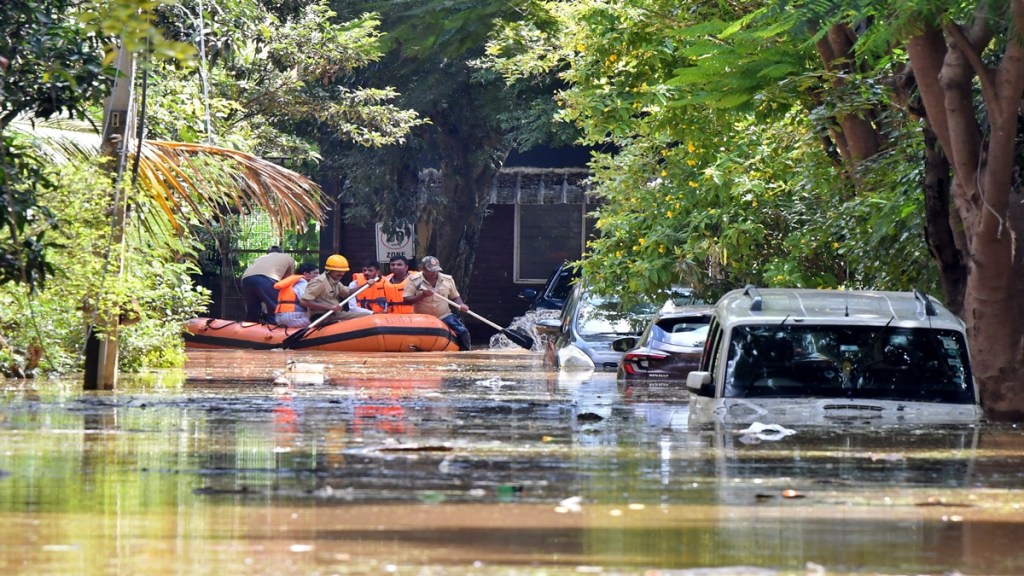By Amar Patnaik
Economist & professor Joseph Stiglitz identifies climate change as a pressing existential threat to humanity, besides inequity and democracy. Large-scale human migration will likely be the most multilayered, yet least-discussed, impact of climate change, further going on to deepen the existing inequities in societies.
Extreme weather events will force people to flee their homes in search of safer living conditions. Rising sea levels due to global warming may flood or even fully submerge coastal areas and make them uninhabitable. Similarly, extreme heat may force people to migrate to cooler geographies. Declining crop yields will probably result in food insecurity. Increasing job competition, limited public and environmental resources for a growing population, altered voting patterns and changing cultural demographics may result in social conflict. What would compound the crisis even more is that even the receiving countries would be facing even more complex societal, economic, agriculture, political and cultural problems.
Vulnerable groups unable to prepare for or recover from climate challenges will be forced into even more unfamiliar and unstable conditions. This displacement will calcify existing horizontal and vertical inequities and would even, most certainly, worsen them. Millions may lose access to food, shelter, and water. Healthcare and education standards may decline perpetuating poverty. Socio-economic disparities and unrest can erode trust in government, leading to crime and discrimination against vulnerable groups. Climate-induced migration and deepening inequalities may entrench and deepen poverty.
To tackle climate change effects, the government can start by integrating possible climate change impacts into the 2005 Disaster Management Act and other existing national frameworks and SOPs. Currently, the Act is focused more on natural disasters like cyclones, floods, earthquakes etc. and that too, more on immediate post-disaster recovery than prevention, mitigation and adaptation measures. This absence of scope to deal with other types of disasters was also encountered during handling of the Covid-19 pandemic. Climate-related natural disasters and the ensuing migrations and industrial and economic deterioration will not come with an end date. Besides, impacts of such disasters are irreversible and epochal in nature compared to natural disasters like cyclones and floods, which disrupt normal life for a certain period of time. The Act must therefore, be expanded to consider rising sea levels due to global warming, desertification, coastal erosion, habitat loss, and large-scale human situation critical threats. Each ministry should also prepare sector-specific plans under the Disaster Management Act with a holistic strategy that accounts for every possible impact of climate change in that particular sector/department/ ministry.
India suffers from a classic case of the left hand not knowing what the right hand is doing, such as the Cabinet approving a chemical fertilizer subsidy of `51,875 crore for the NBS Rabi 2022 despite evidence linking chemical fertilizers to soil and water pollution and greenhouse gas emissions. India must build a robust circular economy that serves the dual purpose of boosting current economic output whilst also future-proofing. For example, urea production from waste is one such strategy. It improves municipal solid waste management and urea-from-waste is cheaper to produce and the residue-derived fuel (RDF) can be used to generate electrical energy. To reach our net zero targets by 2070, India needs to build long-term whole-of-government, community-based and community-led strategies.
Learning from countries like the UK, US, and Singapore, India should establish a Scenario Planning Cell at the PMO. Can we handle large-scale migration to the tune of 2-3 million people coming in from neighbouring countries if global warming continues? Scenarios such as these would have to be thought of, modeled for and strategies kept ready. Apart from top-level commitment, state-level Scenario Planning Cells may also be necessary given India’s size. For this, we have to invest in crisp, data-backed research and modeling to forecast sectoral impacts due to climate change of different proportions in different communities in different geographies. Odisha has a dedicated department to oversee such efforts and promote inter-agency and inter-departmental collaboration. Other states and the Union government should adopt this whole-of-government approach for effective climate action.
India must use its G20 presidency as well as its pre-eminent position in the SAARC to drive a concerted regional effort towards climate-proofing and building resiliency. It should pre-emptively draft policies that offer legal protection against social exclusion, exploitation, violence, and discrimination that climate migrants may have to contend with. At the same time, fortifying the economy, social services, natural resources, and public infrastructure will help protect host communities if faced with large-scale migration. There is little doubt that future political stability not just of India, but also of other countries, may depend upon the government successfully managing climate events and migration fallouts effectively.
(The writer is Member, Rajya Sabha. Views are personal.)


